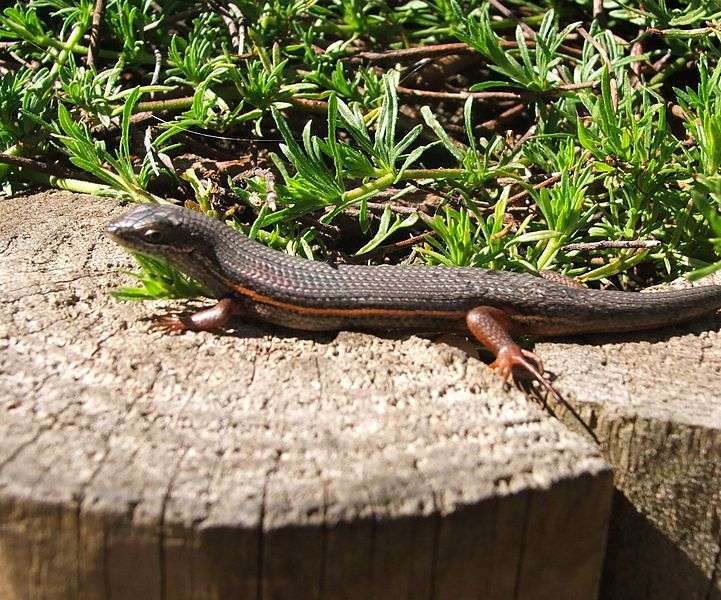
Description:
Scientific name: Trachylepis homalocephala
Life span: 8+ years
The red-sided skink, often referred to as Trachylepis homalocephala, is a small and slender species of skink belonging to the Mabuyinae subfamily. The body of this tiny, graceful skink is glossy and vividly striped. During breeding season, males undergo color change, obtaining vivid red stripes on their flanks.
Native Region/Habitat
T. homalocephala is a native of Southern Africa, where it can be found in leaf litter and coastal thicket along the South African coast from Cape Town eastward to Mozambique. Farther inland in wet mountainous regions, a few small isolated populations can also be found.

Behavior:
The Red Sided Skink can eventually become tame and is highly robust and simple to care for.
Care As a pet/In captivity:
The vivarium should be decorated to look like an open forest. Utilize a soil substrate and cover it with bark chips, logs, slates, and skins. When given branches, this species enjoys climbing as well. Throughout the day, a temperature of 25-30oC (77-86oF) should be maintained, with a basking area of 32C. (90F). During the night, a decrease to no lower than 20oC (68oF) is advised.
Provide them a variety of insects to eat; they might even eat the occasional pinkie (baby mouse). They will crack open Chinese Painted Quail eggs and devour the yolk. A vitamin supplement should also be added to the live meals, once a week for adults and more frequently for infants and children. Spray the vivarium once a week to encourage rain and to maintain the soil substrate damp but not soggy, even though fresh water should always be available.
Table





